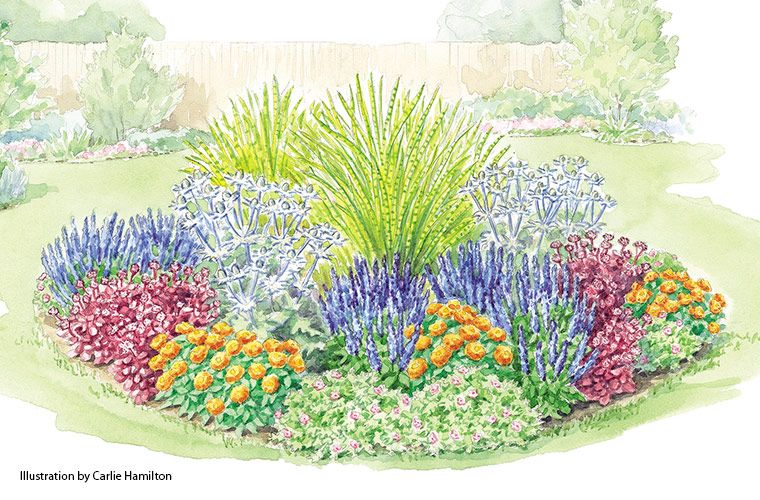Creating Beautiful and Low Maintenance Flower Beds
Low Maintenance Flower Beds: What Are They?
Flower beds are a great way to add color and life to your yard or garden, but they can also be high maintenance with watering and weeding requirements. That’s why low maintenance flower beds have become increasingly popular in recent years. These beds require less water and attention, making them perfect for those who want a beautiful garden without all the work.
Choosing the Right Plants
The first step to creating a low maintenance flower bed is choosing the right plants. Opt for native plants that are adapted to your area’s climate and soil conditions, as they will require less watering and fertilizing than non-native species. Perennials are also a good choice, as they come back year after year and require less replanting.
Some popular low maintenance perennial plants include:
- Lavender
- Black-Eyed Susan
- Peonies
- Daylilies
- Sedum
Consider adding some annuals:
While perennials are great for a long-lasting garden, annuals can add an extra pop of color that lasts throughout the season. Some low maintenance options include:
- Marigolds
- Zinnias
- Petunias
- Impatiens
Designing Your Flower Bed
Once you’ve chosen your plants, it’s time to design your flower bed. The key to a low maintenance flower bed is keeping it simple. Too much variety can lead to more watering and weeding, so stick to a few species of plants that complement each other well.
Some tips for designing your flower bed include:
- Create groupings based on color or texture
- Use edging to keep weeds out
- Consider adding mulch to help retain moisture and suppress weeds
Preparing Your Soil
Before planting your flowers, you’ll want to prepare your soil to ensure they have the best chance at thriving. by removing any weeds or rocks from the area. Then, mix in compost or fertilizer to give your plants the nutrients they need to grow strong.
Here are some tips for preparing your soil:
- Test your soil pH to determine if any amendments are needed
- Loosen compacted soil with a garden fork or tiller
- Add organic matter to improve soil structure and drainage
Maintenance Tips
Even though low maintenance flower beds require less work than traditional gardens, they still need some care to thrive. Here are some tips to keep your flower bed looking its best:
Watering:
- Water deeply and infrequently to encourage deep root growth
- Avoid overhead watering to reduce disease and evaporation
- Consider using a drip irrigation system to save water
Weeding:
- Remove weeds as soon as you see them to prevent them from spreading
- Consider using a weed barrier or mulch to suppress weed growth
- Use a hoe or hand weeder to remove weeds without disturbing your plants
Pruning:
- Remove dead or damaged foliage to promote healthy growth
- Deadhead spent blooms to encourage more flowering
- Prune back overgrown plants in the fall to prepare for winter
Frequently Asked Questions (FAQs)
1. How much sun do low maintenance flower beds need?
Most low maintenance flowers prefer full sun, meaning at least six hours of direct sunlight per day.
2. How often should I fertilize my low maintenance flower bed?
Most low maintenance plants only need to be fertilized once or twice a year, typically in the spring and fall.
3. Do I need to water my low maintenance flower bed every day?
No, low maintenance flower beds require less watering than traditional gardens. Water deeply and infrequently to encourage deep root growth.
4. Can I add vegetables to my low maintenance flower bed?
While it's possible to add vegetables to your flower bed, they may require more care and attention than low maintenance flowers.
5. How can I prevent pests from damaging my low maintenance flower bed?
Consider using natural pest control methods like companion planting or insecticidal soap. You can also choose plants that are resistant to common garden pests.










Comments
Post a Comment